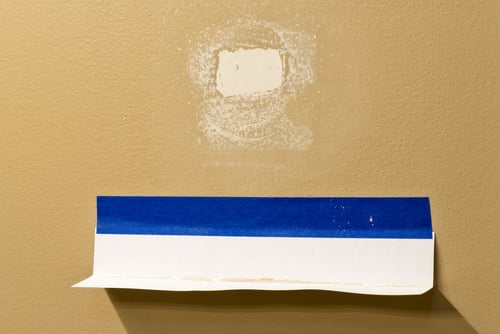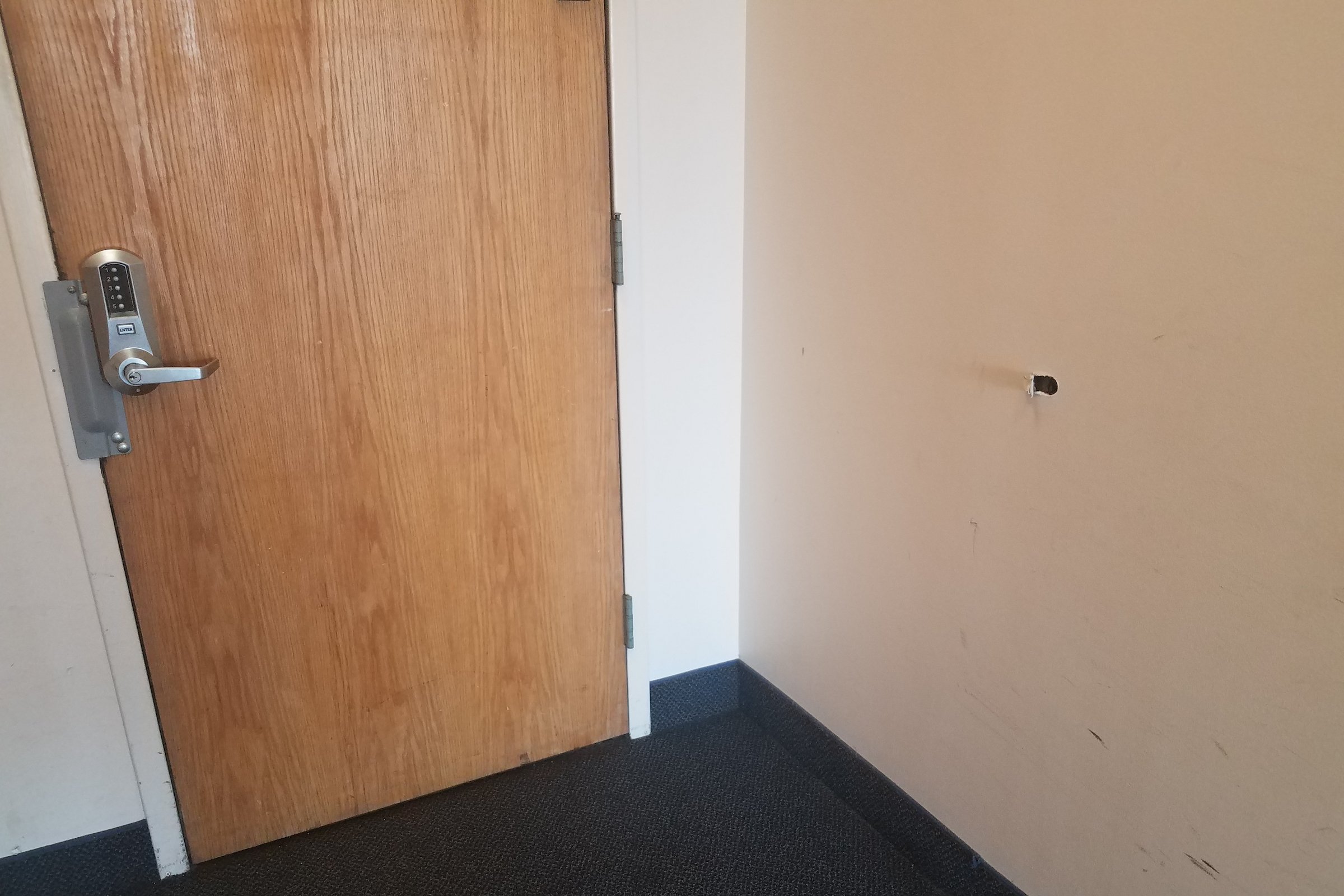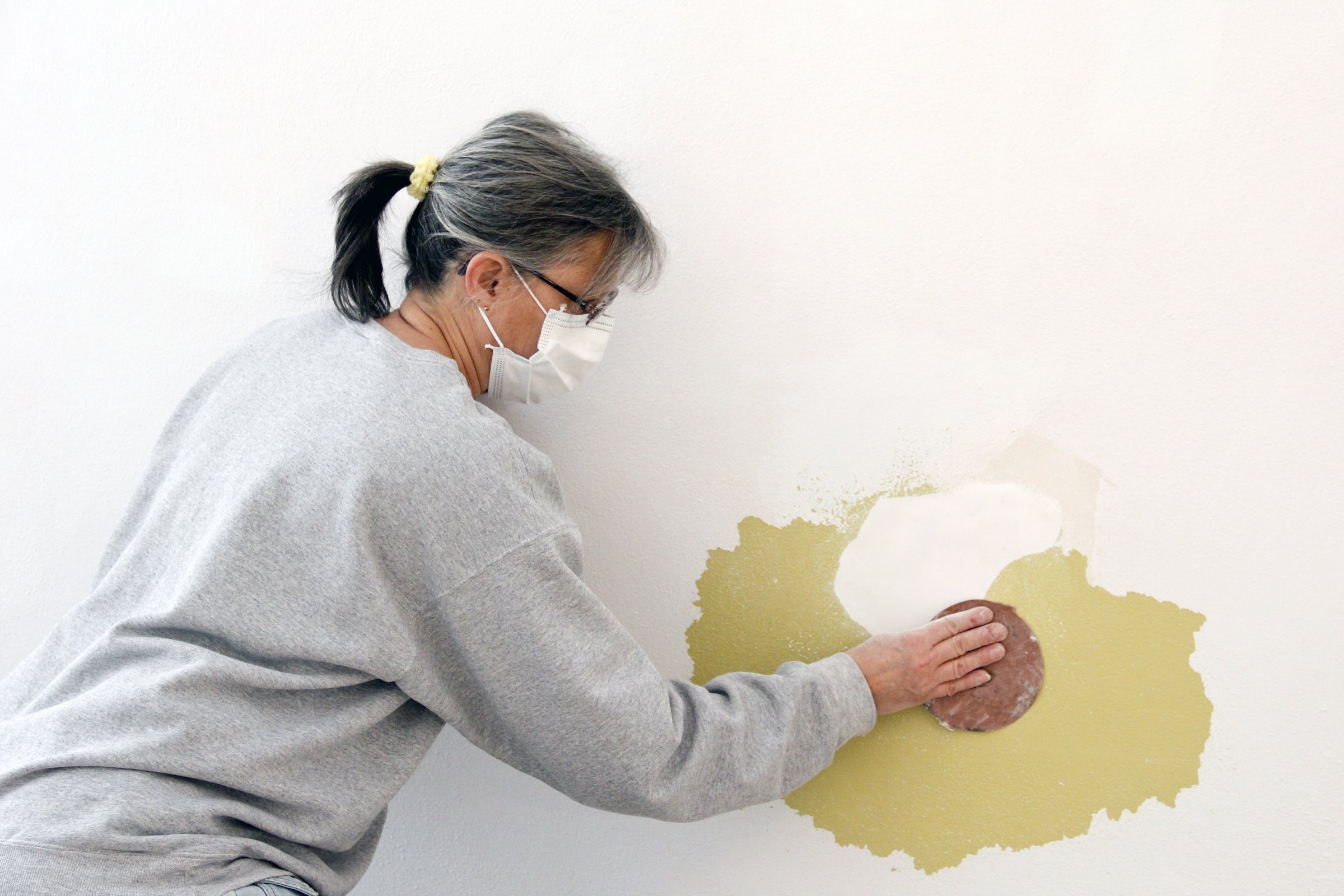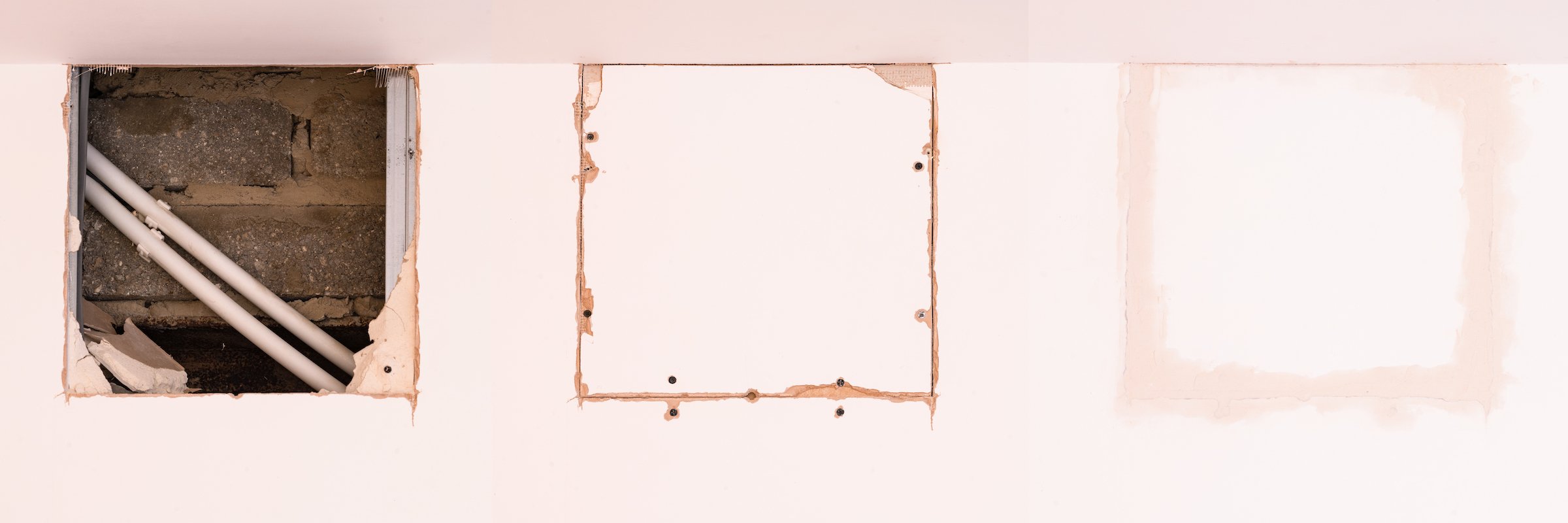Drywall. Gypsum. Sheetrock. Whatever you call it, the majority of our homes use this versatile product as a canvas for our creative wall art. We hang pictures, televisions, shelving, or window treatments on it. We bump into it often, and our pets sometimes chew on it. Whatever the cause, and whether you need your security deposit back or just want to fix up the house, you’ll need to repair the holes left behind in your drywall.
We've put together a step-by-step guide on how to patch a hole in drywall, from small touch-ups to large gaps. Your walls will look as good as new in no time.
How to Prep for a DIY Drywall Repair
 Before you start repair work, consider safety first. Wear protective gear such as work gloves, goggles and a dust mask. Locate electrical wires and plumbing pipes before cutting, drilling or nailing into drywall. Electrical wires are often stapled to wall studs.
Before you start repair work, consider safety first. Wear protective gear such as work gloves, goggles and a dust mask. Locate electrical wires and plumbing pipes before cutting, drilling or nailing into drywall. Electrical wires are often stapled to wall studs.
Assemble the proper tools for the job such as a drill, drywall saw, utility knife, joint knife, box cutter, hammer, pencil, nail set and tape measure. Depending on the size of the damage, you'll also need to buy supplies. Supplies you may need include: spackling compound, thin furring strips, sandpaper, drywall tape, self-adhesive mesh patches, masking tape, and drywall screws. If you plan on repairing several large holes, you'll also need a sheet of drywall that you can cut into patches.
How to Patch Small Dents in Drywall
Supplies Needed:
- Spackling
- Putty Knife
- Sand Paper
- Touch Up Paint
You’re in luck—it’s easy to repair small blemishes in drywall.
First, scrape away any loose debris. Then, fill in the dent with spackle by dragging compound across the area with a putty knife. Let it dry for 24 hours. Then, sand it flush to the wall and apply touch-up paint.
The Key to Fixing Nail Pops
 Supplies Needed:
Supplies Needed:
- Drywall Screws
- Electric Screwdriver
- Hammer
- Spackling
- Putty Knife
- Sand Paper
- Touch Up Paint
House settling may cause nails to back out of the drywall and protrude above the drywall surface. In order to repair a nail pop, you’ll have to reattach the drywall by using a drywall screw. Then, you’ll be able to repair the damage to your drywall.
- Reattach the drywall to the stud with a drywall screw located approximately 1-1/2 inches above the nail pop. Screw in your drywall screws so that the head of the screw sits just under the surface of the drywall.
- Hammer the popped nail back in.
- Fill in the space on top of the screw and nail heads with spackling and your putty knife.
- Let dry 24 hours, sand smooth, and apply finish paint.
Follow These 3 Steps to Patch a Small Hole in Drywall
 Supplies Needed:
Supplies Needed:
- Drywall Repair Patch Kit
- Spackling
- Putty Knife
- Sand Paper
- Touch Up Paint
Sometimes, small holes in drywall just happen. Whether it’s a doorknob that swung out and dented the wall, a stud-finding project that went horribly wrong, or an over-zealous champagne cork, we’ve got the tips for how to fix the hole right here.
- Cut a self-adhesive drywall patch kit to size and place over the hole.
- Cover the patch with drywall spackling compound. You’ll apply it with a putty knife, using a crisscross pattern.
- Let it dry for 24 hours, apply a second coat if you need to, sand it flush with the wall, and finish it up with touch up paint.
How to Fix Medium Sized Holes in Your Drywall
 Supplies Needed:
Supplies Needed:
- Drywall Patching Panel
- Drywall Saw
- Box Cutter
- Pencil
- Spackling Compound
- Putty Knife
- Sand Paper
- Touch Up Paint
Medium-sized holes of up to 6 inches are a little more complicated and will require a drywall patching panel to fill. You’ll cut a piece out of the drywall patching panel, and cut around the current drywall hole so that you can install the drywall patching panel flush with the wall. You’ll fit the new piece of drywall into the hole like a puzzle piece, and apply spackling compound to seal it in.
- Using a drywall saw, cut a square piece of drywall that's 2 inches larger than the hole.
- Use a box cutter to score the back of the drywall patching panel. You’ll want to cut an inch from each side, and then snap off the drywall. Be careful to leave the paper backing.
- Trace the drywall patching panel over the drywall hole in your wall with a pencil. Use a drywall knife to cut out the traced square on your wall (make sure you avoid cutting into electrical wires).
- Put spackling compound on the back of the paper border and fit the drywall patch into the new hole. Press the paper edges along the outside edge of the hole. The spackle should hold it in place.
- Apply spackling compound over the entire patch and feather the edges.
- Let dry 24 hours, apply a second coat of spackle, let dry again, sand smooth, and finish it off with touchup paint.
Patching Large Holes in Drywall Supplies Needed:
Supplies Needed:
- Drywall Patching Panel
- Drywall Saw
- Box Cutter
- Pencil
- Spackling Compound
- Putty Knife
- Sand Paper
- Touch Up Paint
- Furring Strips
- Drywall Screws
- Mesh Joint Tape
We’re not even going to ask what happened. But we will say, if the large hole in your drywall is over 6 inches, you’ll need a drywall patch and small wood pieces called furring strips to hold it in place.
- Cut a drywall square 2 inches larger than the hole in your wall.
- Trace around the edges of the drywall square over the hole. This will tell you how much to cut around the hole in your wall so that you can fit the patch in.
- Cut out the traced area with a drywall knife, and remember to watch for electrical wires.
- Here’s the fun part: take your first furring strip, and stick it inside the hole, all the way to your left. Then, screw the drywall screws into the furring strip. Just make sure the screws end up just below the drywall. You’ll put one screw in the top, and one in the bottom of the strip. Then, repeat this process on the right side of the hole.
- Now, secure the drywall patch to the furring strips with four drywall screws. The patch should be just below the surface of the drywall.
- Apply self-adhesive, mesh joint tape along the edges of the patch.
- Cover the entire area with spackle, and don’t forget to smooth it out! Let it completely dry and add a second coat of spackling to ensure that the patch is no longer visible. Then, sand it down, and apply touch up paint.
Not Sure This Project is For You? Call in the Professionals.
If you live in an area where Puls offers handyman services, we can help. With a click of a button, our skilled technicians will bring all the tools and materials needed to patch holes in your drywall.
Need extra chores done around the house? Our handyman services can take care of a variety of other projects from cleaning out your gutters, to hanging a light fixture, to painting your bedroom, or installing appliances.
It's our goal to provide the best service to our customers. That’s why we include a 90-day guarantee on all our handyman services for peace of mind.




